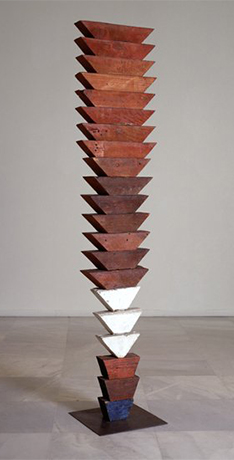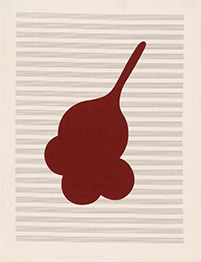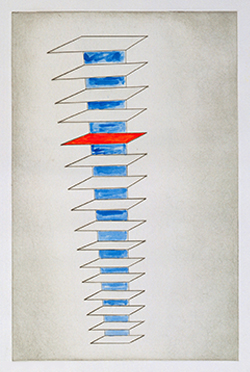





Abstraction

Untitled, no. 1 of 19, from the portfolio, Fugue
2003

Paris Review
1993-1994
The art of Louise Bourgeois is most closely associated with provocative imagery, in the form of figures, body parts, spiders, and architectural structures. Yet abstraction plays a highly significant role overall. Printed grids, biomorphic ink drawings, and geometric wood totems are found in her early years, organically shaped marble and plaster sculptures come later, and an outpouring of abstract drawings and prints fills her last decade.
For Bourgeois, abstraction was yet another tool for understanding and coping with her feelings, which were always the driving forces of her art. She used terms like “calming,” “caressing,” or “stabbing” to describe strokes, and her drawn lines and evocative shapes reflect shifting moods and perceived vulnerabilities. Her methods harked back to the automatism of the Surrealists, in which compositions evolved intuitively with symbolic overtones. She often took advantage of repetition, drawing simple straight lines across sheets of notepads as she struggled with insomnia, thereby creating a diary of her fraught emotions.
Within the formats of printmaking—books, portfolios, and series—Bourgeois assembled abstract narratives, sometimes adding fragments of text. In fabric, her pages were fashioned from materials with stripes, plaids, or curvilinear patterns. The backdrop of music staves printed on paper provided another abstract foil for her rhythmic lines and shapes. In her last years, Bourgeois took up the technique of soft ground etching, which allowed her wavering touch to be sensitively captured. The result was a series of monumental abstract prints, often with hand-coloring, that are sometimes shown in room-scale installations.

Untitled, no. 1 of 19, from the portfolio, Fugue
2003

Paris Review
1993-1994
“It is not an image I am seeking. It’s not an idea. It is an emotion you want to recreate, an emotion of wanting, of giving, and of destroying.”